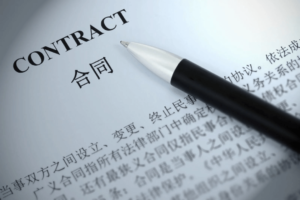Trademark subclasses play a crucial role in brand protection in China. With its vast market and growing economy, China has become an attractive destination for businesses looking to expand their presence. However, navigating the complexities of China’s trademark classification system can be challenging. Understanding the importance of trademark subclasses is essential for businesses seeking to protect their brand in this lucrative market.
Table of Contents
ToggleUnderstanding the Importance of Trademark Subclasses in China
Trademark subclasses refer to the specific categories within each class of goods and services that trademarks are registered under. In China’s legal system, trademarks are classified into 45 different classes, each representing a specific category of goods or services. These classes are further divided into subclasses, which provide more specific descriptions of the goods or services.
The importance of trademark subclasses in China’s legal system lies in the fact that trademark protection is granted on a class-by-class basis. This means that registering a trademark in one class does not automatically grant protection in other classes. Therefore, it is crucial for businesses to identify and register their trademarks in the correct subclass to ensure comprehensive brand protection.
Trademark subclasses also play a significant role in determining the scope of protection for a registered trademark. In China, trademark rights are limited to the specific goods or services covered by the registration. By registering a trademark in the appropriate subclass, businesses can ensure that their brand is protected within their specific industry or sector.
Navigating the Complexities of China’s Trademark Classification System
China’s trademark classification system follows the Nice Classification system, which is an international standard for classifying goods and services for trademark registration purposes. The system consists of 45 different classes, each representing a specific category of goods or services.
Within each class, there are numerous subclasses that provide more specific descriptions of the goods or services. For example, Class 25 covers clothing, footwear, and headgear, while its subclasses include items such as shirts, pants, shoes, and hats. It is essential for businesses to understand the different subclasses within their chosen class to ensure accurate registration.
Navigating China’s trademark classification system can be challenging for businesses, especially those unfamiliar with the Chinese language and legal system. The system’s complexity, combined with the strict examination process, can lead to delays and potential rejections if not properly understood. It is crucial for businesses to seek professional guidance from trademark attorneys who are familiar with the intricacies of China’s trademark classification system.
Protecting Your Brand in China: An Overview of Trademark Subclasses
Registering your trademark in the correct subclass is crucial for brand protection in China. By doing so, businesses can ensure that their brand is protected within their specific industry or sector. This is particularly important in a country like China, where counterfeiting and trademark infringement are prevalent.
Each subclass within a class represents a specific category of goods or services. For example, Class 9 covers electrical and scientific apparatus, while its subclasses include items such as computers, smartphones, and televisions. By registering a trademark in the appropriate subclass, businesses can prevent others from using similar marks on related goods or services.
Determining the correct subclass for your business requires careful consideration of the goods or services you offer. It is essential to conduct thorough research and analysis to identify the most relevant subclass for your brand. This can involve reviewing existing trademarks in your industry, consulting with trademark attorneys, and considering future expansion plans.
The Benefits of Registering Your Trademark in Multiple Subclasses
Registering your trademark in multiple subclasses can provide additional benefits for brand protection in China. By doing so, businesses can increase their scope of protection and prevent others from using similar marks on related goods or services.
One of the main benefits of registering in multiple subclasses is that it allows businesses to cover a broader range of goods or services under their trademark. This can be particularly advantageous for companies that offer a diverse range of products or services. By registering in multiple subclasses, businesses can prevent others from using similar marks on related goods or services, even if they are not directly competing.
Registering in multiple subclasses can also help businesses prevent others from diluting their brand. By securing trademark rights in various subclasses, businesses can establish a strong and distinctive brand identity across different industries or sectors. This can make it more difficult for others to use similar marks that could potentially confuse consumers.
Several successful examples demonstrate the benefits of registering in multiple subclasses. For instance, a luxury fashion brand may register its trademark in Class 25 for clothing and Class 14 for jewelry. By doing so, the brand can prevent others from using similar marks on both clothing and jewelry items, ensuring comprehensive brand protection.
Common Mistakes to Avoid When Filing for Trademark Protection in China
When filing for trademark protection in China, businesses must be aware of common mistakes that can lead to rejection or delays. One common mistake is failing to register a trademark in the correct subclass. As mentioned earlier, trademark protection is granted on a class-by-class basis in China. Failing to register in the appropriate subclass can result in limited protection or potential infringement issues.
Another common mistake is not conducting thorough research and analysis before filing for trademark protection. It is crucial to review existing trademarks in your industry to ensure that your proposed mark does not conflict with any existing registrations. Failure to do so can result in rejections or potential legal disputes down the line.
Additionally, businesses should be cautious when translating their trademarks into Chinese characters. It is essential to ensure that the translated version accurately reflects the intended meaning and does not have any negative connotations or associations. Working with a trademark attorney who is familiar with the Chinese language and culture can help avoid these translation pitfalls.
Tips for Identifying the Right Trademark Subclasses for Your Business
Identifying the correct trademark subclasses for your business requires careful consideration and research. Here are some tips to help you navigate this process:
1. Review existing trademarks: Conduct a thorough review of existing trademarks in your industry to identify any potential conflicts or similarities. This can help you determine which subclasses are already crowded or highly competitive.
2. Consider future expansion plans: Think about your business’s future growth and expansion plans. If you anticipate entering new markets or offering new products or services, it may be beneficial to register your trademark in relevant subclasses to ensure comprehensive brand protection.
3. Consult with trademark attorneys: Seek guidance from trademark attorneys who are familiar with China’s trademark classification system. They can provide valuable insights and help you navigate the complexities of the system.
4. Analyze market trends: Stay informed about market trends and developments in your industry. This can help you identify emerging subclasses that may be relevant to your business and provide opportunities for brand protection.
Strategies for Maximizing Your Brand Protection in China
Maximizing brand protection in China requires a comprehensive strategy that incorporates trademark subclasses. Here are some strategies to consider:
1. Register in relevant subclasses: Identify the most relevant subclasses for your business and register your trademark in those categories. This will provide comprehensive protection within your specific industry or sector.
2. Monitor and enforce your trademark rights: Regularly monitor the market for potential infringements of your trademark rights. If you identify any unauthorized use of your mark, take immediate action to enforce your rights and protect your brand.
3. Use trademark subclasses to your advantage: Leverage the benefits of registering in multiple subclasses to establish a strong and distinctive brand identity across different industries or sectors. This can make it more difficult for others to use similar marks that could potentially confuse consumers.
4. Work with local partners: Establish relationships with local partners, distributors, or agents who can help monitor the market and enforce your trademark rights in China. They can provide valuable insights and support in navigating the local business landscape.
The Role of Trademark Attorneys in Mastering China’s Trademark Subclasses
Trademark attorneys play a crucial role in helping businesses navigate China’s trademark classification system. They have in-depth knowledge and understanding of the system’s complexities and can provide valuable guidance throughout the registration process.
Trademark attorneys can assist businesses in identifying the correct subclasses for their trademarks, conducting thorough research and analysis, and preparing and filing the necessary documentation. They can also help businesses monitor the market for potential infringements and take appropriate legal action to enforce their trademark rights.
Working with a trademark attorney can help businesses avoid common mistakes, ensure successful registration, and maximize brand protection in China.
Keeping Up with Changes in China’s Trademark Classification System
China’s trademark classification system is subject to periodic updates and changes. It is crucial for businesses to stay up-to-date on these changes to ensure compliance and maximize brand protection.
To stay informed, businesses should regularly review updates from the China National Intellectual Property Administration (CNIPA), which is responsible for overseeing trademark registration in China. Additionally, working with a trademark attorney who is familiar with the latest developments can provide valuable insights and guidance.
Case Studies: Examples of Successful Brand Protection Through Trademark Subclasses in China
Several businesses have successfully protected their brand in China through trademark subclasses. One example is Apple Inc., which has registered its trademark in multiple subclasses, including Class 9 for electronic devices and Class 42 for computer software development. By doing so, Apple has established a strong and distinctive brand identity across different industries, ensuring comprehensive brand protection.
Another example is Nike Inc., which has registered its trademark in various subclasses, including Class 25 for clothing and Class 28 for sporting goods. By registering in multiple subclasses, Nike has prevented others from using similar marks on related goods or services, establishing a strong presence in the Chinese market.
These examples demonstrate the benefits of registering in multiple subclasses and leveraging trademark subclasses to protect and strengthen your brand in China.
Trademark subclasses play a crucial role in brand protection in China. Understanding the complexities of China’s trademark classification system and registering your trademark in the correct subclass is essential for comprehensive brand protection. By leveraging trademark subclasses, businesses can establish a strong and distinctive brand identity, prevent infringement, and maximize their presence in the Chinese market. Working with trademark attorneys who are familiar with China’s trademark classification system can provide valuable guidance and support throughout the registration process. With careful consideration and strategic planning, businesses can successfully protect their brand in China through trademark subclasses.
If you’re interested in protecting your brand in China, you may also find the article on “The Importance of Mastering China’s Trademark Subclass System” helpful. This article explores the intricacies of China’s trademark subclass system and provides valuable insights on how to effectively navigate it for brand protection. Understanding the subclass system is crucial for ensuring comprehensive trademark protection in China. Check out the article here.








